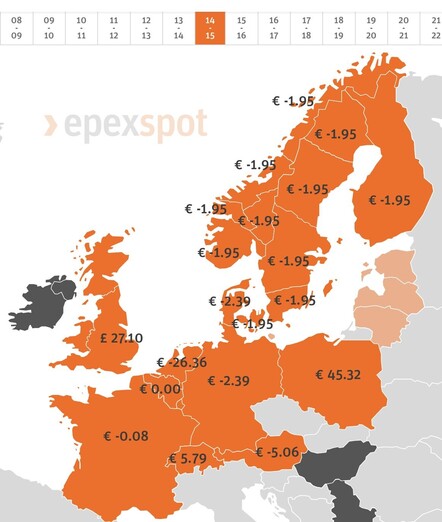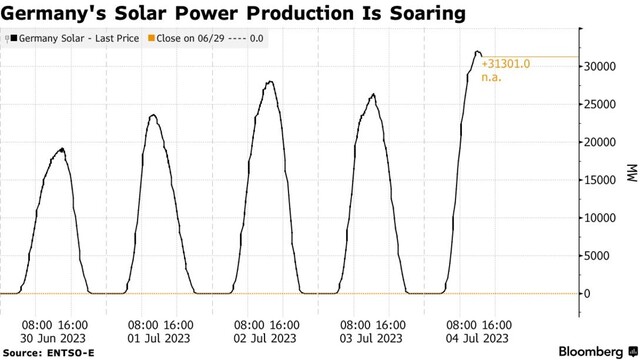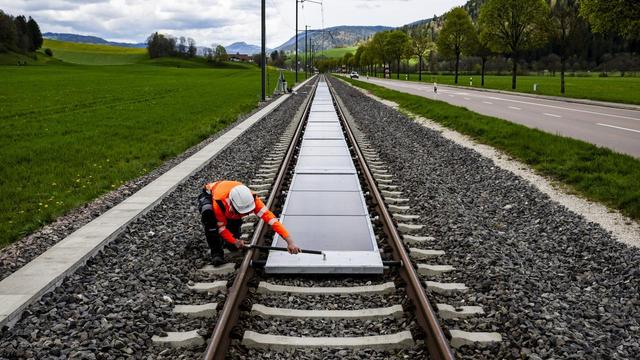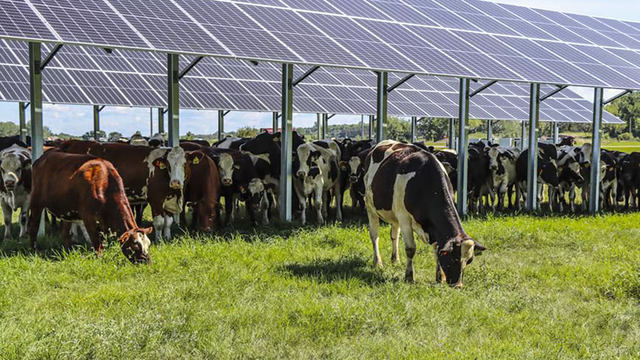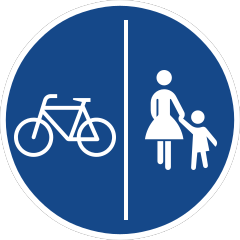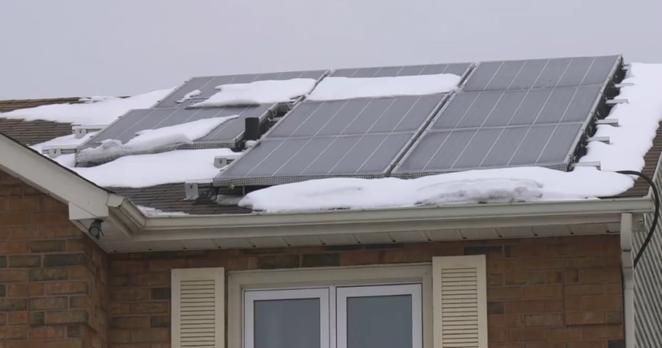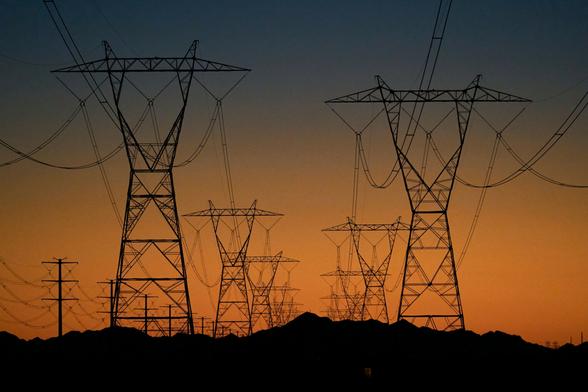https://twitter.com/gerardreid14/status/1662356280042766336
https://twitter.com/gerardreid14/status/1662356280042766336
☀️⚡️ Everyone in Switzerland agrees we need more solar. But often, there's disagreement about where to put the panels without impacting the landscapes too much.
🛤️ Looking back, this one is a no-brainer, why not lay them down between train rails: there's already a strong connection to the grid, and it's infrastructure that's already ‘built’.
🇨🇭 First segment of the tracks got inaugurated today in canton Neuchâtel.
https://www.rts.ch/info/regions/neuchatel/2025/article/la-premiere-centrale-solaire-sur-rails-a-ete-inauguree-dans-le-canton-de-neuchatel-28863275.html
Supplier: https://www.sun-ways.ch
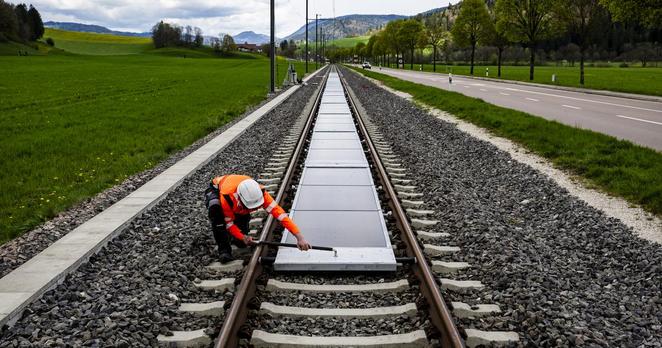
La première centrale solaire sur rails a été inaugurée dans le canton de Neuchâtel
C'est un projet inédit en Suisse: la première centrale solaire amovible sur une voie ferrée ouverte au trafic ferroviaire a été inaugurée jeudi à Buttes, dans le canton de Neuchâtel. Des trains voyageurs vont donc circuler par-dessus une installation photovoltaïque.
@fj it's cute but even if you did all of it, 3800 km of standard gauge at 1.4mish wide with an energy density of roughly 100 W/m² gives you about 500 MW of power total, i.e. 10% of current (tiny) Swiss solar capacity.
You could get the same capacity by converting 0.03%(!) of Swiss agricultural land to solar.
@ives I'm not really convinced by roof solar, it's cute and fun, but installing solar on farmland is much cheaper and you can get an added ecological benefit by rewilding the land quite significantly, seeding meadows beneath and around the panels
https://solarenergyuk.org/news/wildlife-found-thriving-on-solar-farms/ (it's from an industry group, so take with a pinch of salt, but look at how gorgeous those meadows are...)
@ives yeah, fair enough, sorry. i could only cover 80% of it in solar panels without a single person having to move. i had underestimated just how dense Belgium is - it is about 20% populated as you said.
I'm not keen on cutting down any forests so let's only cover 50% of Belgium in solar panels
that's 15,000km² which would be about 1,500GW - double the current total world capacity of solar
i really don't understand in what way you "don't have space" :)
https://www.atlas-belgique.be/index.php/en/digital-atlas/agriculture/
It seems to me that livestock grazing is not incompatible with solar panels.
@resuna @nemobis @bovine3dom @ives More solar panels and a little less livestock would be the ideal combination.
The cows do however love the shade the solar panels provide.
@bovine3dom Rewilding isn't even necessary if you put up vertical both-sided agrivoltaic panels oriented north to south: https://en.wikipedia.org/wiki/Agrivoltaics
@alterelefant Facing west and east makes a line oriented north to south. I meant it like pictured there.
1. The ground is already sealed. You don t use roofs to do anything.
2. Under most roofs are already relative strong electrical acces points to the grid.
3. Most houses do consume as well electricity
@simon_brooke @bovine3dom @ives @fj I'm all for solar on roofs, however, they are not a no brainer. They must be installed with at least enough intelligence to avoid things like this.
@stuartgale I'm not saying they shouldn't do it, I just wanted to add some perspective that was missing from the article :)
Switzerland is currently installing about 1500MW of solar power capacity a year so they're not doing horrendously badly. They could do more, especially since "overcapacity" in China means panels are extremely cheap at the moment. But it is thankfully far more than 0MW.
@bovine3dom @fj
Also factor in that they are at the wrong angle for optimally picking up light, and they are on the floor and going to get very dusty very quickly.
It is slightly less dumb than solar roadways, but only slightly.
@fj The rail line near me carried iron ore pellets on a regular basis, and the hopper cars were leaky enough to litter the tracks with an abundance of 15 mm spheres.
Leaks of cargo and rail car lubricants could be a problem for roadbed solar panels.
Wonder if this part will help eliminate enough of the mess most trains leave
"The Buttes project, in the Val-de-Travers, involves a section of about a hundred linear metres on a transN line. 48 solar panels have been installed. The electrical connections are secured inside the panels. Cleanliness can be guaranteed thanks to cleaning systems in the form of cylindrical brushes that are placed at the end of the train."
This is like solar farms in the empty space of highway cloverleaf intersections. It is land which can not be used for much of anything else, so it's the ideal place for solar.
@LivInTheLookingGlass
@fj i think the Swiss railways are not very enthusiastic about this idea, for tracks maintenance (costs) and security reasons.
How much solar power potential is still not exploited on the roofs, where panels are not interfering with critical infrastructure? This idea doesn't look serious to me.
Edit: Switzerland uses only 10% of its roof solar power potential, per march 2025.
Source: https://www.rts.ch/info/environnement/2025/article/carte-interactive-explorez-le-potentiel-solaire-des-toits-de-votre-commune-28811100.html
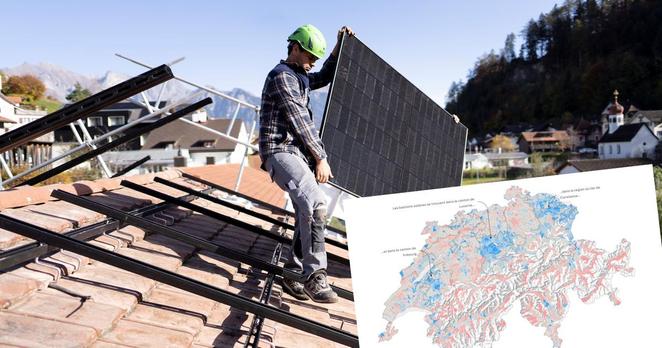
Le potentiel solaire des toits de votre commune est-il bien exploité?
L'énergie solaire progresse en Suisse. Pour la première fois, la barre des 10% des surfaces de toits appropriées à l’installation de panneaux photovoltaïques a été dépassée. La carte et les graphiques de nos collègues de SRF montrent comment votre commune se situe par rapport aux autres communes du pays.
I was just laughing last night with friends about the 15 year old "Solar Freaking Roads!" craze. Looks like if you insert the word "Rail" is the one way it actually wins versus Solar Freaking Canopies.
Why not above the tracks? Why not over canals?
But best:
Why not under transmission lines?
Often already owned by the democracy, on lines connecting to need, could accept added wind generation too. And good land for smart grids.
https://www.swissgrid.ch/en/home/operation/power-grid/swiss-power-grid.html
 But joke aside, it just feels like it would be exposed too much to mechanical damage
But joke aside, it just feels like it would be exposed too much to mechanical damage@fj Solar panels are a very affordable way to generate electricity and should definitely be on every roof or flat surface available.
In general it seems like a good idea. I can think of a couple of practical reasons to maybe not install them in between rails. For track inspection or in case of any maintenance to the tracks the solar panels will have to be removed in order to avoid damage. This will create extra costs for track maintenance and may therefore not be feasible in every situation.
@fj this is the kind of innovation that we need more of.
Makes sense in places:
-where available land is limited
-where electrical infrastructure is nearby
-where other uses are not going to be restricted
Solar panels, like other silicon chips, are going to continue to become more efficient and cheaper, just like that PC of the ‘80’s that cost $6k and used a floppy disk for storage. Nobody thought they made any sense either…
